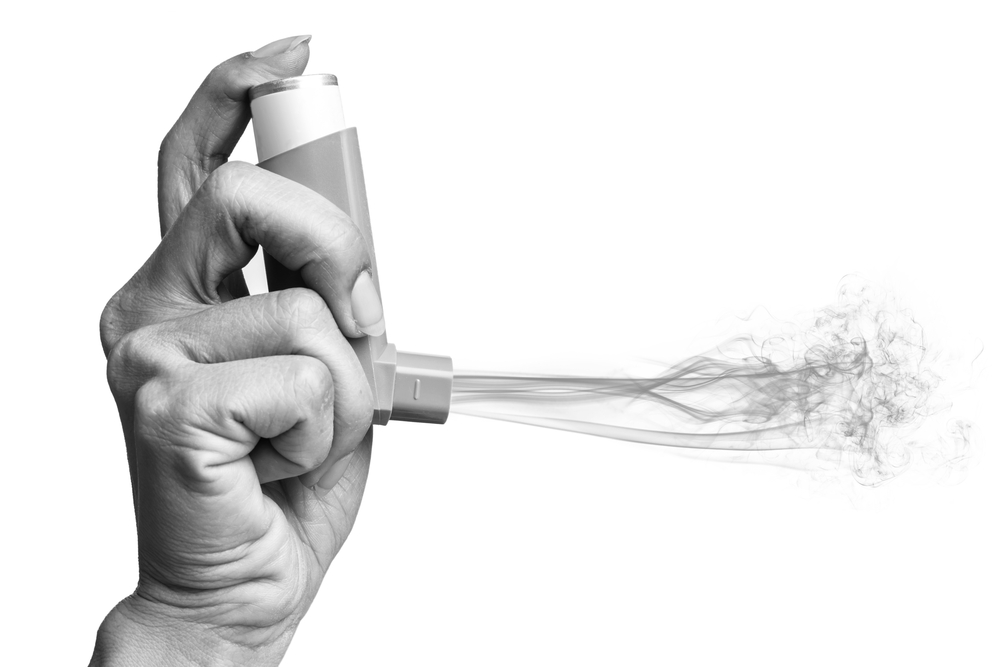Inhaled Corticosteroids Don’t Seem to Benefit SCD Kids with Acute Chest Syndrome, Study Says
Written by |

Researchers found that inhaled corticosteroids (ICS) given at the time of hospital admission did not improve outcomes in children with sickle cell disease (SCD)-associated acute chest syndrome.
The study, “Early initiation of inhaled corticosteroids does not decrease acute chest syndrome morbidity in pediatric patients with sickle cell disease,” was published in the journal Blood Cells, Molecules, and Diseases.
Acute chest syndrome (ACS) is a frequent complication of sickle cell disease, especially in those who have been hospitalized with vaso-occlusive crisis. The condition is actually a major cause of death among SCD patients.
With symptoms similar to asthma, it is defined as a new pulmonary infiltrate on a chest X-ray, accompanied by fever, chest pains, abnormally rapid breathing, cough, wheezing, or low oxygen levels.
In children, the condition frequently leads to acute lung disease and is associated with an increased risk of sickle cell-related mortality and morbidity, including prolonged hospital stays.
Although systemic corticosteroids, given orally or injected, are normally used to treat asthma attacks, they are not routinely used for ACS because they increase the risk of recurrent vaso-occlusive crisis.
Besides, the use of corticosteroids poses increased risks of harmful side effects such as avascular necrosis (loss of blood to the bone) and hemorrhagic stroke in sickle cell patients.
A potentially safe alternative could be inhaled corticosteroids (ICS). They target delivery to the lungs and limit absorption throughout the body. But the efficacy of ICS has been uncertain.
Researchers investigated whether inhaled corticosteroids could help children with sickle cell disease and ACS get better outcomes after being admitted to the hospital.
They used data from medical records of 120 children with sickle cell disease and acute chest syndrome, admitted to the Children’s National Health System hospitals in the Maryland, northern Virginia and Washington, D.C areas from 2008 to 2010 and compared those who received ICS at admission (65 patients) with those who did not (55 patients). Children had a mean age of 9 in the ICS-treated group and 10 in the untreated group.
Outcome measures included rates of transfusion, oxygen requirement, BiPAP (noninvasive ventilation) initiation, a noninvasive form of mechanical ventilation, transfer to intensive care unit, intubation, readmission, hospital cost, and length of stay.
Previous history of ACS was similar in the two groups, 57% in ICS-treated patients vs. 47% in non-ICS-treated children, as was the number of prior acute chest syndrome episodes.
In addition, most patients in both groups had acute chest syndrome considered moderate by examination of infiltrates on chest X-rays.
In those receiving inhaled corticosteroids, however, a higher proportion had asthma — 52.3% compared to 12.7% in the untreated group — and were more often prescribed with a controlled ICS.
But no differences were seen in the number of children transferred to the intensive care unit, or in the frequency of blood transfusion or oxygen use between both groups.
Hospital costs, length of stay, and number of children who required readmission within 30 days were also not significantly different in patients treated or not with inhaled corticosteroids.
Fewer children in the ICS group required intubation, but more required airway ventilation with BiPAP. However, such differences were not significant after considering parameters such as history of asthma among the patients.
An analysis did not reveal changes in any of the patient outcomes measured, even when children with and without asthma were compared separately.
“In this observational cohort study, ICS did not demonstrate a significant reduction in ACS morbidity, though ICS use should be studied in a prospective manner,” researchers wrote.
The study showed, however, that unlike systemic steroids, inhaled corticosteroids do not increase the risk of readmission, which is consistent with other studies reporting less systemic toxicity with nebulized vs. systemic corticosteroid use in patients with asthma and COPD (chronic obstructive pulmonary disease).
“Larger, prospective, multi-center studies are needed to determine the utility of [inhaled corticosteroids] in preventing or decreasing ACS morbidity as well as genetic variability in the response to ICS treatment,” the team concluded.





